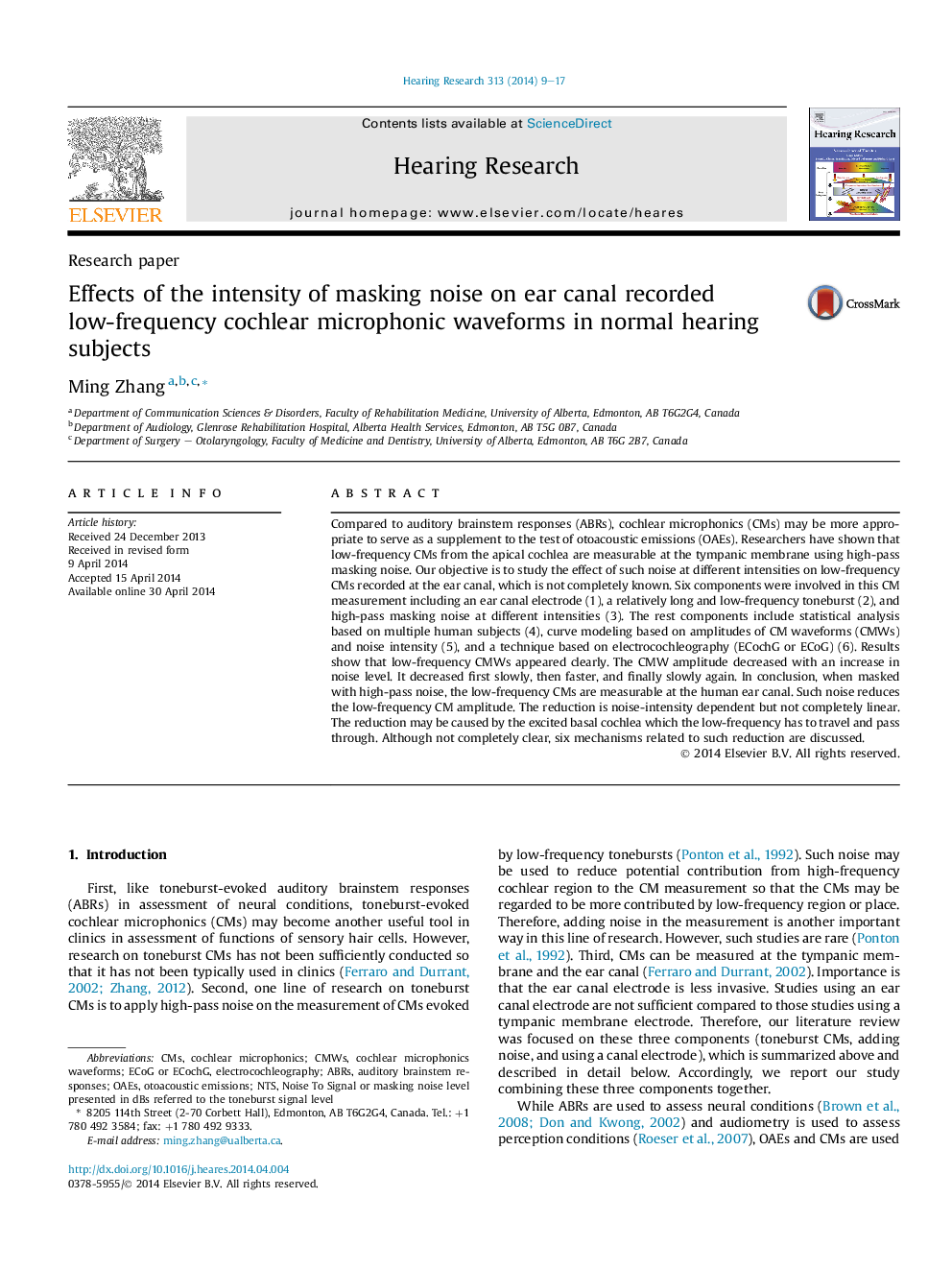| کد مقاله | کد نشریه | سال انتشار | مقاله انگلیسی | نسخه تمام متن |
|---|---|---|---|---|
| 4355147 | 1615587 | 2014 | 9 صفحه PDF | دانلود رایگان |
• An ear canal electrode can also be used to record low-frequency CMs masked by high-pass noise.
• Such noise reduces CM amplitudes as low-frequency CMs have to pass through basal cochlea.
• Such reduction is noise-intensity dependent.
• The reduction is not completely linear as a function of masking noise intensity.
• These findings may lead to new applications, e.g., optimization of masking intensities.
Compared to auditory brainstem responses (ABRs), cochlear microphonics (CMs) may be more appropriate to serve as a supplement to the test of otoacoustic emissions (OAEs). Researchers have shown that low-frequency CMs from the apical cochlea are measurable at the tympanic membrane using high-pass masking noise. Our objective is to study the effect of such noise at different intensities on low-frequency CMs recorded at the ear canal, which is not completely known. Six components were involved in this CM measurement including an ear canal electrode (1), a relatively long and low-frequency toneburst (2), and high-pass masking noise at different intensities (3). The rest components include statistical analysis based on multiple human subjects (4), curve modeling based on amplitudes of CM waveforms (CMWs) and noise intensity (5), and a technique based on electrocochleography (ECochG or ECoG) (6). Results show that low-frequency CMWs appeared clearly. The CMW amplitude decreased with an increase in noise level. It decreased first slowly, then faster, and finally slowly again. In conclusion, when masked with high-pass noise, the low-frequency CMs are measurable at the human ear canal. Such noise reduces the low-frequency CM amplitude. The reduction is noise-intensity dependent but not completely linear. The reduction may be caused by the excited basal cochlea which the low-frequency has to travel and pass through. Although not completely clear, six mechanisms related to such reduction are discussed.
Journal: Hearing Research - Volume 313, July 2014, Pages 9–17
